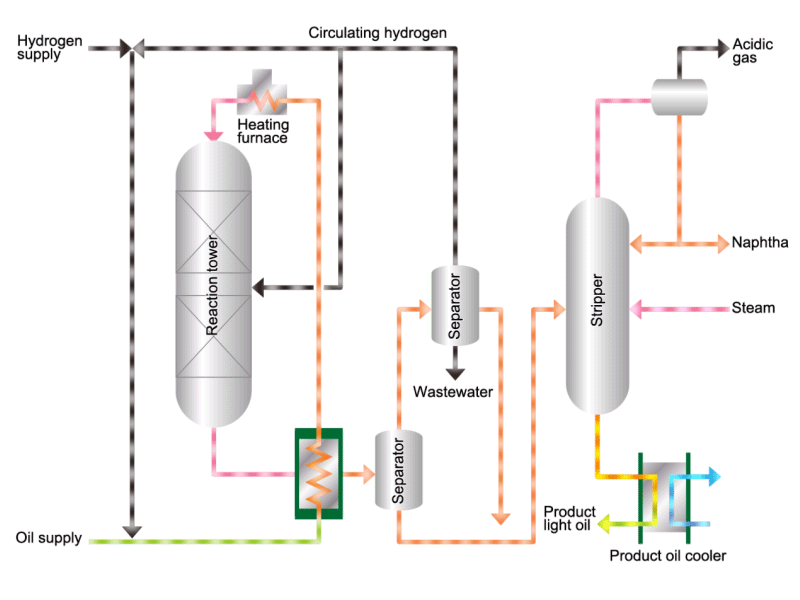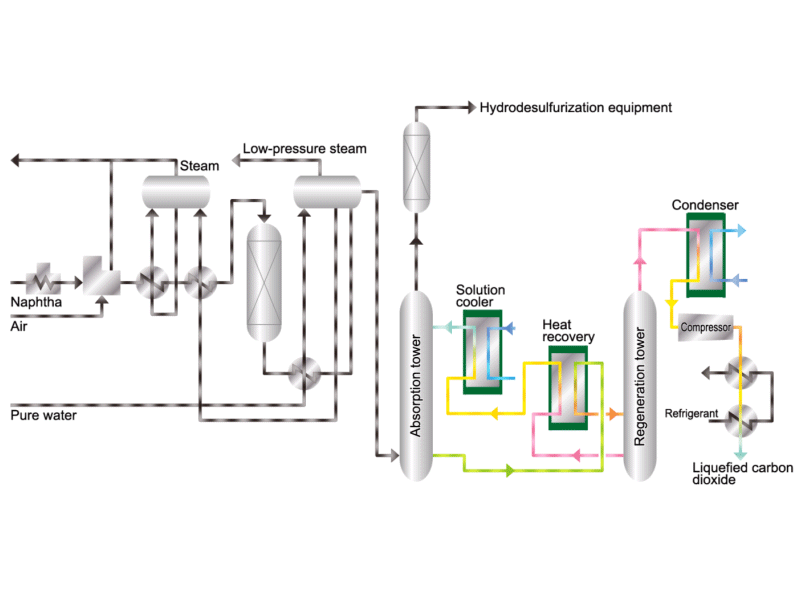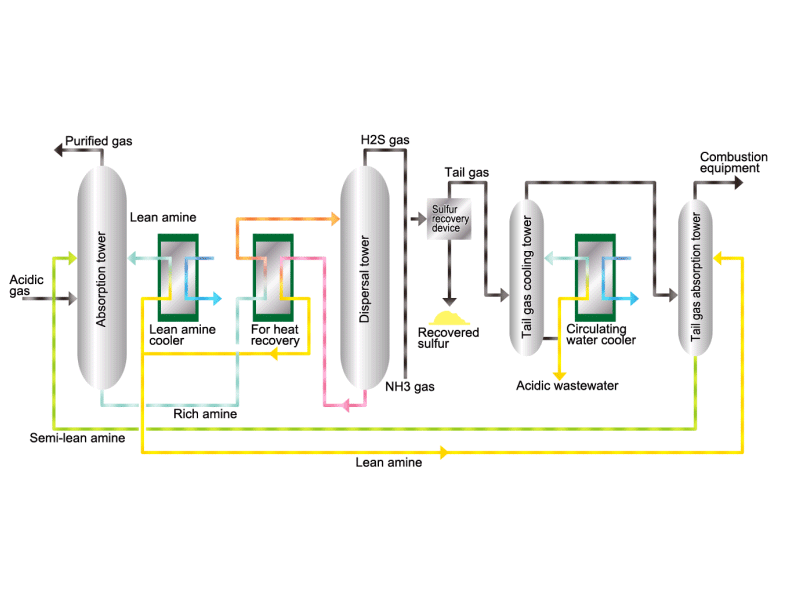 Petroleum Refining
Petroleum Refining
- Process overview
- Petroleum refining is the process of refining crude oil to produce a wide variety of products, such as fuel oil and petrochemical products. Differences in boiling points are used to separate the crude oil mixture into its constituent components, which are then separated on the shelf stages inside the atmospheric distillation column. Naphtha and benzene, which have low boiling points, are extracted at the top plate, and heavy oil, which has a high boiling point, is extracted at the bottom. Then, after undergoing sulfur removal and other treatments, they are shipped as high-quality products (gasoline, kerosene, jet fuel, etc.).
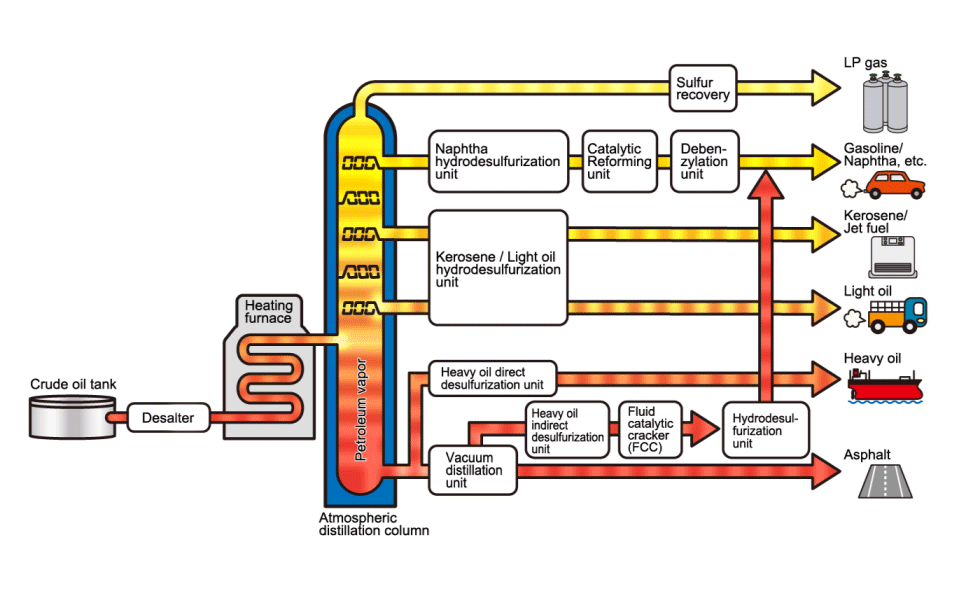
 Desalting
Desalting
Before crude petroleum is sent for atmospheric distillation process, it undergoes a desalting treatment at the desalting tank. Cleaning water is pumped into the desalting tank. At this process, HISAKA plate heat exchanger are used. In the desalting tank, an electric charge supplied by a high voltage is used to separate the salts from the petroleum. The separated salts are then discharged by the cleaning water as waste water.
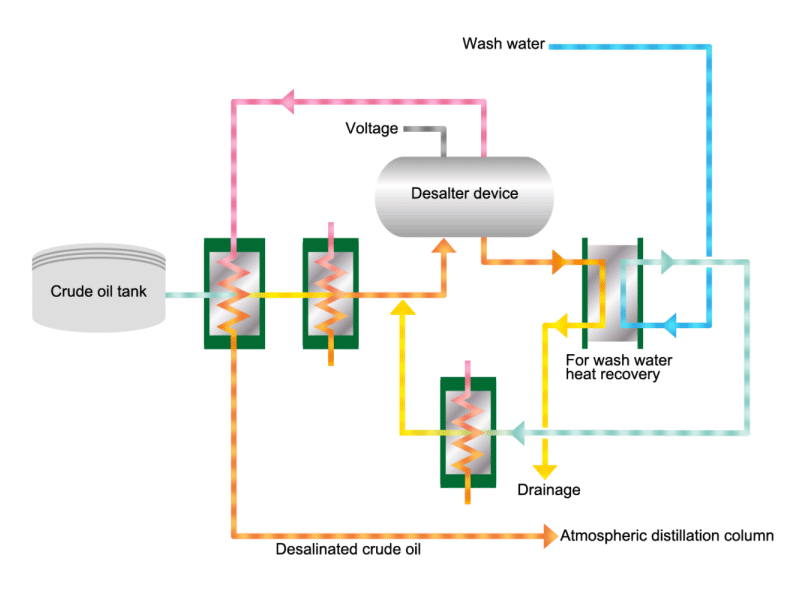
 Atmospheric Distillation
Atmospheric Distillation
After the petroleum undergoes the desalting process, the petroleum is then distilled in an atmospheric distillation tower. It is then separated in to each of its components based on their respective mass from volatile gasses to heavy liquid oils. For the purpose of heat recovery, HISAKA heat exchangers are used for boiler water supply and light gas oil.
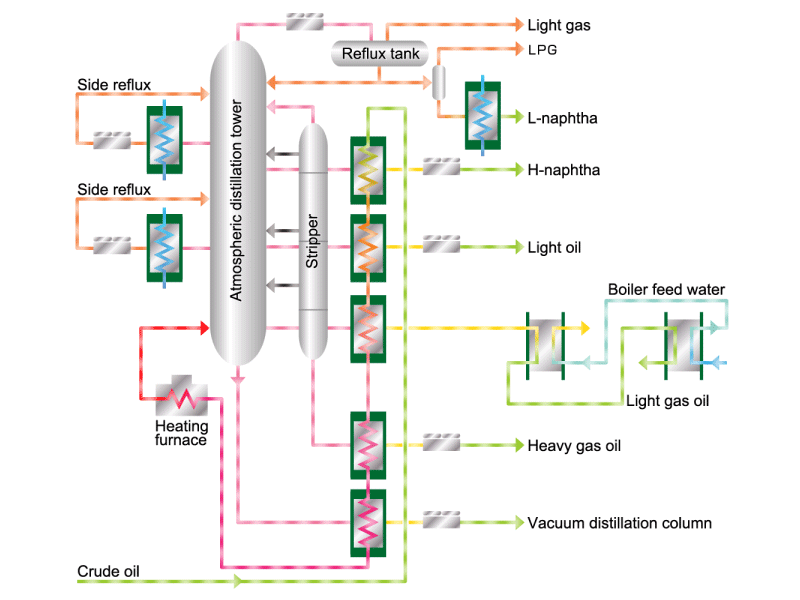
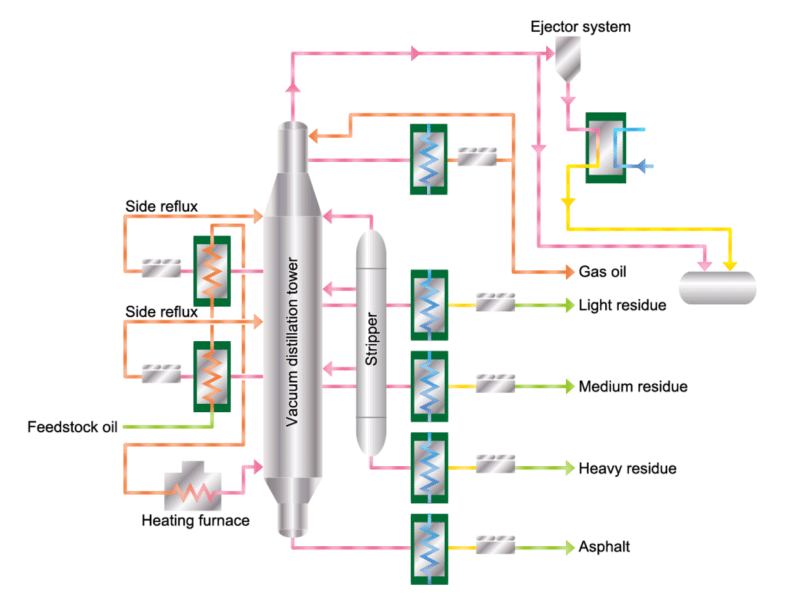
 Desulfurization
Desulfurization
Before feed oil is sent to the reactor, it will be mixed with hydrogen gas. Before the mixture, the raw oil contains sulfur and ammonia contents. Prior to that, HISAKA plate heat exchanger are also used in the process of removing acidic gas from the feed oil with the use of an HDS unit.
